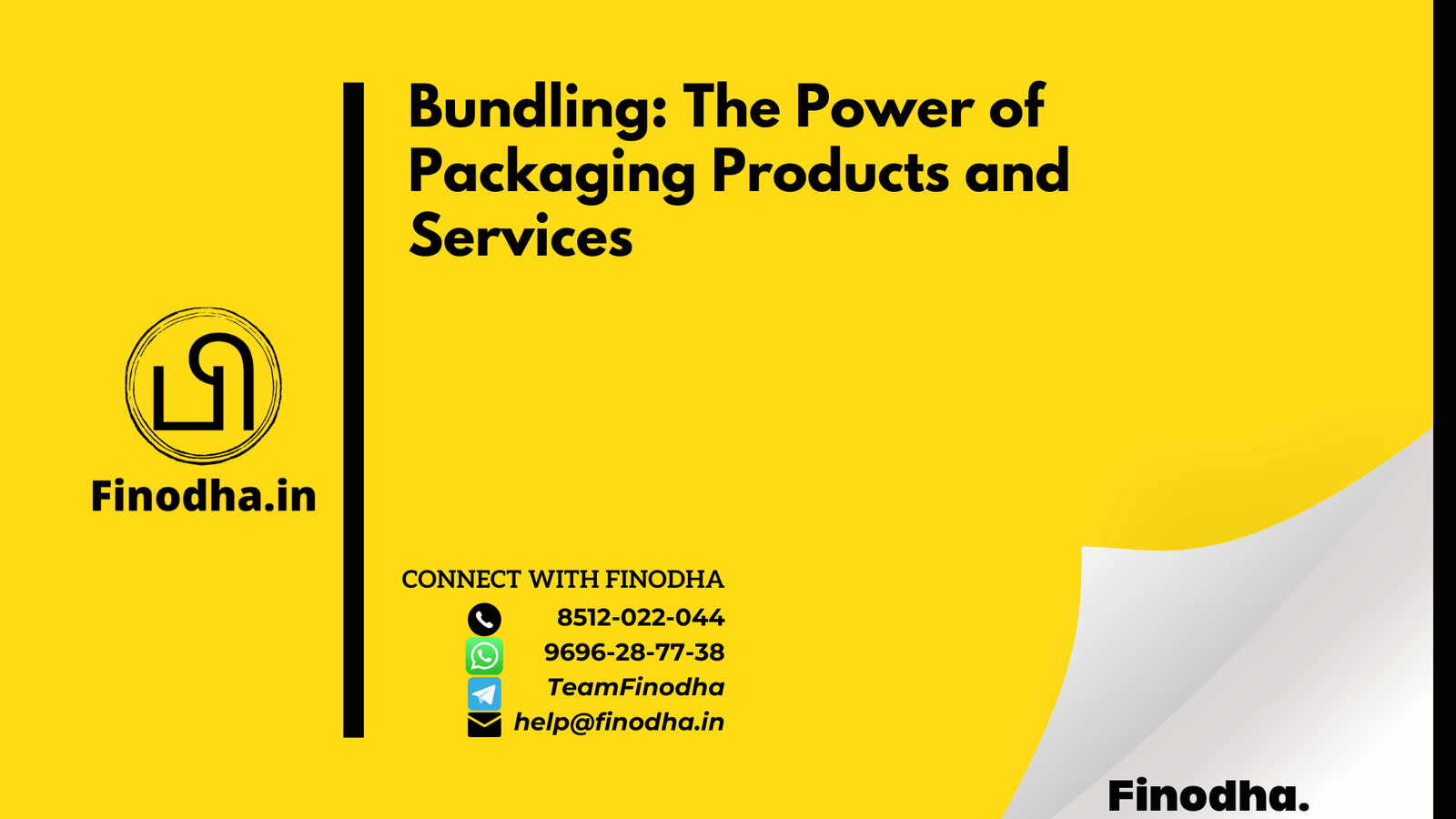Important Keywords: bundling, marketing strategy, products, services, mixed bundling, pure bundling, convenience, cost savings, inventory, a la carte, discounts, added value, e-commerce, smart TV, soundbar, streaming device.
Table of Contents
Introduction:
Bundling is a marketing strategy employed by companies to combine multiple products or services into a single package, often at a discounted price. This article aims to explain the concept of bundling in a simplified manner, making it easy to understand for the average Indian reader with limited English grammar knowledge.
Subheadings & Short Paragraphs:
- Defining Bundling:
Bundling refers to the practice of offering multiple products or services together as a package. Instead of selling items individually, companies create bundled offerings to provide convenience and potentially offer cost savings to customers. - Understanding the Purpose of Bundling:
The main goal of bundling is to attract customers by simplifying their purchasing decisions and offering added value. By packaging complementary products or services together, companies make it easier for customers to obtain everything they need in one transaction. - Types of Bundling:
Bundling can take two primary forms: mixed bundling and pure bundling. Mixed bundling allows customers to choose between purchasing products/services individually or as part of a package. Pure bundling requires customers to purchase the entire bundle as a single unit. - Benefits of Bundling:
Bundling provides several advantages for both companies and customers. For businesses, it can help increase sales volume, attract new customers, and clear inventory of less popular products. Customers benefit from the convenience of acquiring multiple items in one purchase and the potential cost savings through bundled discounts. - Exceptions to Bundling:
While bundling can be beneficial, it may not always suit every customer’s preferences. Some individuals, particularly younger consumers, prefer to customize their purchases and buy items separately. However, this approach may result in missed opportunities for cost savings and additional benefits offered through bundled packages.
FAQs:
Q1: Why do companies use bundling?
A1: Companies employ bundling to simplify purchasing decisions, offer convenience to customers, increase sales volume, and potentially clear less popular inventory.
Q2: What are the different types of bundling?
A2: Bundling can be mixed, where customers have the option to buy items individually or as part of a package, or pure, which requires purchasing the entire bundle as a single unit.
Example:
To understand bundling in an Indian context, let’s consider the following scenario:
An e-commerce company introduces a “Home Entertainment Bundle” that includes a smart TV, a soundbar, and a streaming device. The bundled package is priced lower than the total cost of purchasing each item separately. This appeals to customers who are looking to upgrade their home entertainment setup, as they can conveniently purchase all the necessary components in one go, saving both time and money.
Key Takeaways:
- Bundling involves combining multiple products or services into a single package.
- The purpose of bundling is to simplify purchasing decisions and offer added value to customers.
- Bundling can be mixed, allowing customers to choose between individual items or a package, or pure, requiring the purchase of the entire bundle.
- Bundling benefits companies by increasing sales volume and clearing inventory, while customers enjoy convenience and potential cost savings.
- Although some customers prefer a la carte purchases, bundling offers opportunities for discounts and additional benefits.
Conclusion:
Bundling is a powerful marketing strategy that benefits both companies and customers. By packaging related products or services together, companies can attract customers, simplify purchasing decisions, and increase sales. Customers, in turn, enjoy the convenience of acquiring multiple items in a single transaction and potentially saving money through bundled discounts. While bundling may not suit everyone’s preferences, it presents an opportunity for cost savings and added convenience in the purchasing process.
Popular Tags:
Business and Profession Income (11) Capital gains (21) CGST (36) Chapter VI-A (15) compliance (10) Due date (10) e-Compliance Portal (21) E-Verify (20) economic growth (11) F&O Trading (29) F.No.354/117/2017-TRU (23) F. No. CBIC-20001/4/2024-GST (12) F. No. S-31011/25/2017-ST-I-DOR (12) financial stability (11) Financial statements (9) GST (1193) HUF (10) Income from Business & Profession (12) Income from House Property (17) Income Heads (16) Income Source (14) Income tax (109) Income Tax Account (15) Income Tax Compliance (12) Income Tax Filing (20) Income Tax Website (12) India (9) Indian context (22) Indian investors (15) investment decisions (9) IT Notice (10) ITR (10) ITR-2 (11) ITR-3 (19) ITR Form (20) P&L Statement (24) PAN (13) Risk Management (11) Salary Income (19) Section 7(1) UTGST Act 2017 (12) Section 8(1) UTGST Act 2017 (23) Section 21 UTGST Act 2017 (11) Speculative Income (14) Tax Audit (12) Trading Income (33)





0 Comments